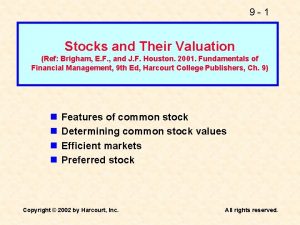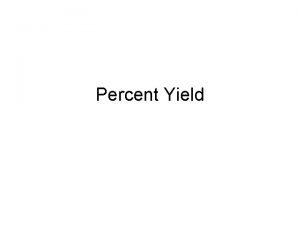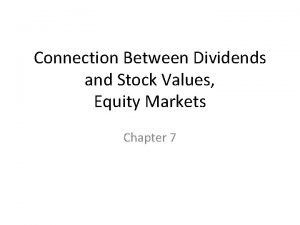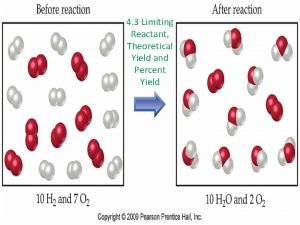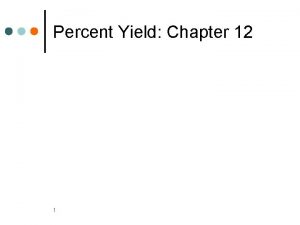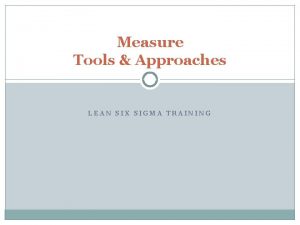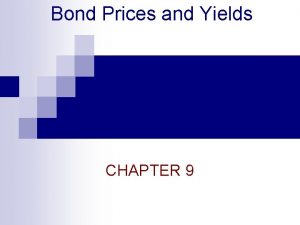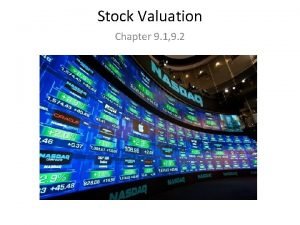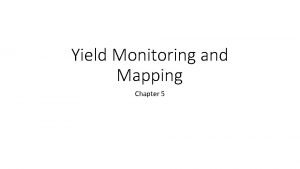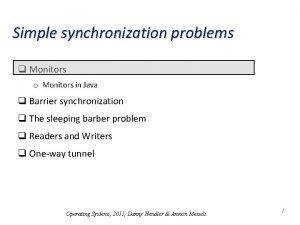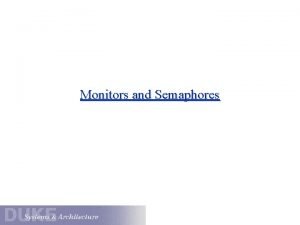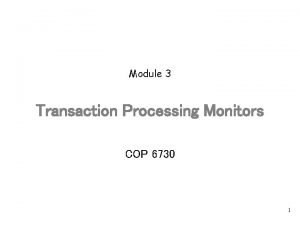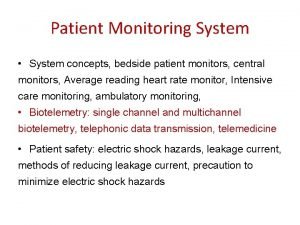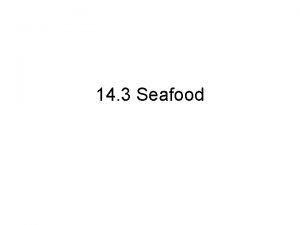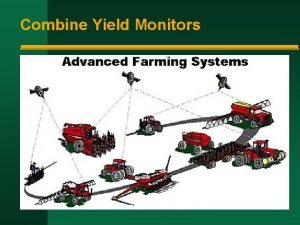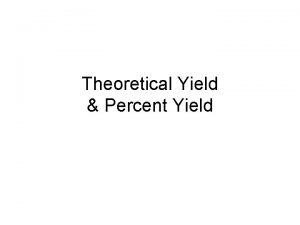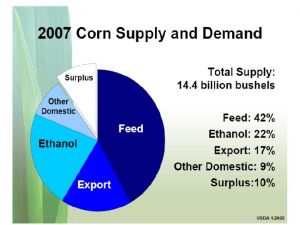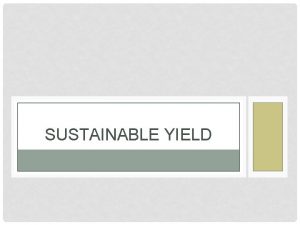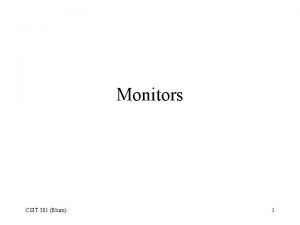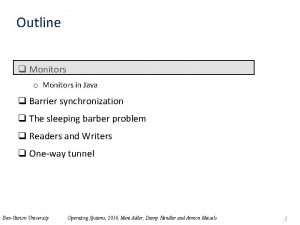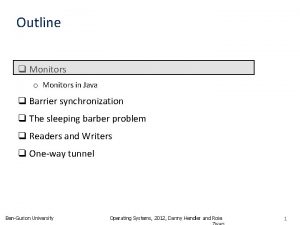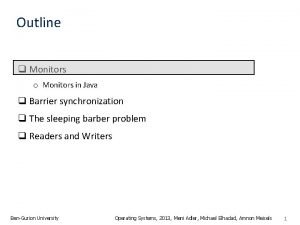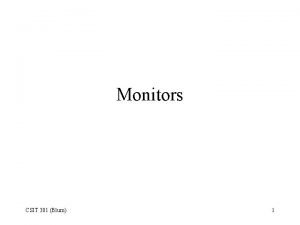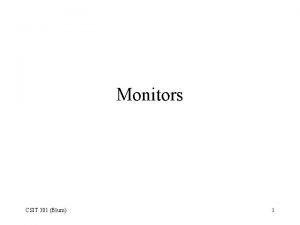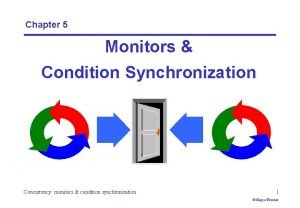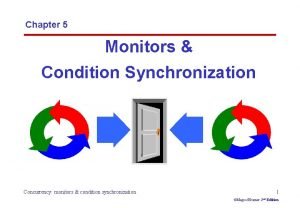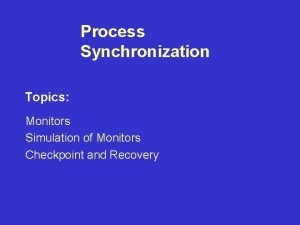Yield Monitors Field Mapping What is a Grain
























- Slides: 24

Yield Monitors & Field Mapping

What is a Grain Yield Monitor • A grain yield monitor is simply an electronic tool that collects data on crop performance for a given year. The monitor measures and records such information as grain flow, grain moisture, area covered, and global location.

Yield Monitors

Yield Monitors Yield Monitor produced by Insight the most popular brand of yield monitors in the world.

Parts of a grain yield monitor • • Data storage device User interface (Keyboard, Display screen) A Task Computer Sensors ( Moisture, Volume, Speed, Location)

Grain Flow Sensors • The most essential component of any yield monitoring system is the sensor used to measure the mass or volume of clean grain moving through the separator of a combine. While the nature of mass-flow or volumetricflow sensing may vary by manufacturer, these devices are almost always located at or near the top of the clean grain elevator, as shown in Figure 3.

Mass-Flow Sensing • The most common approach is mass-flow sensing, which is accomplished by assessing the impact force of grain hitting a plate. The paddles of the clean grain elevator accelerate grain as the chain makes a 180° turn at the top of the elevator. The centrifugal acceleration generated as the paddles make this turn causes the grain to separate from the paddles. Grain then contacts the elevator enclosure and falls toward the base of the bin loading auger. It is at this location, where grain impacts the elevator housing, that impact-type sensors are positioned. • An impact sensor measures the mass flow rate of grain through a combine by sensing the force of grain as it impacts a plate or beam, using either a strain gage or a linear potentiometer to measure deflection of the beams or various members holding the plate. Because the impact sensor is the most prevalent type of grain flow sensor in the United States, it is the primary focus of this publication. Three other sensors—radiation-based, photoelectric, and paddle wheels—are also explained because they have been incorporated into a number of commercially viable products.

Mass Flow Sensor

Ground Speed Sensor • Ground speed can be easily measured using the existing magnetic pick-up provided by the combine manufacturer. A square wave is generated as ferrous gear teeth within the transmission. One of the problems with this approach is measurement error due to wheel slippage. Radar provides an alternative method for measuring ground speed and is preferable when compared to the magnetic sensor pick-up. It is not subject to wheel slip errors, which can be an important factor when combines are operated in unfavorable conditions such as on wet soil. ansmission pass the magnetic pick-up

Moisture Sensor • Today, most moisture sensors are mounted on the side of the clean grain elevator. This location is better than mounting the sensor on the tankloading auger because the sensors encounter less grain flow, reducing the buildup of debris on the sensor plates. This buildup introduces bias into the moisture measurements. The moisture sensor is essentially a conductive shell or metal plates with an electrically isolated internal metal fin.

DGPS Sensor • The Digital Global Positioning System is used to get a real time location of the combine in the field. • Initially developed for national security interests, a portion of the system is available to civilians. When yield data is combined with info from a dgps receiver, a yield map can then be produced.

Yield Map

Yield Map Variance Interpretive Guide Pattern Description Straight Line Patterns Irregular Patterns Direction of Application Against Direction of Application • change in planting date • change in hybrid/variety • change in chemical application • selected rescue treatment • chemical skips and misapplications • equipment errors • poor straw/chaff distribution • compaction • change in soil type • tile patterns • drainage patterns • topography changes • historically different • weed infestations • herbicide drift fields • soil fertility changes • border shading • old traffic patterns • previous crop activity effects • manure applications • disease infestations • insect infestation • pipelines/phone • herbicide carryover from bordering lands lines underground • historic occurrences • improper manure • previous compaction • insect infestations application • old laneways/fence • changes in o. m. • waterways lines • animal damage • wet areas Irregular Line Irregular Area/Patch

The Benefits of Yield Monitors • • In-Field, Real-Time Benefits During Harvest Collect on-farm testing results with little or no disruption of the harvest operation Note and avoid catastrophic combine grain spills using the instantaneous yield monitor readout Co-mingle grain accurately with multiple farming partners but insufficient on-farm grain storage Facilitate on-the-go grain moisture decisions, e. g. "Should grain go to the drier or to town? " Know where to move grain earlier by avoiding the wait for scale readings Optimize combine throughput but minimize post-header grain losses by keeping bu/hour reading within a desired productivity range Use real-time yield information to capture early-season contracts or marketing premiums when

The Benefits of Yield Monitors • • • On-Farm Benefits Create detailed Field and Load yield summaries Evaluate the cost of poor weed control Evaluate the effects of poor drainage and estimate the pay-back period for tiling Achieve greater convenience in evaluating management practices such as plant populations, row spacing, tillage, hybrid and variety selection, date of planting, plant nutrient applications, pesticide choices, etc. Document the cost of management errors such as nutrient application skips Evaluate the effects of variable soil nutrient and p. H levels on crop yield Quantify yield losses within a field due to field margin effects, landscape position, soil differences or crop pest infestations Evaluate hybrid consistency within a field Document planting and other field activities in time and space. Develop a historical spatial data base Locate best areas for yield contest plots Map cost of production and farm around perennially unprofitable areas

The Benefits of Yield Monitors • Off-Farm Benefits • Offer custom yield mapping services to other farmers • Custom harvesters can offer yield mapping services or better document acreage and productivity • Document the spatial history of special end-use crops to add value with identity-preserved marketing • Increase farm/field value upon sale with proven yield history and related spatial data base

Considerations when purchasing • When you make this first move into precision agriculture, your choices are limited by what is available and the level at which you intend to enter the technology. Cost for yield monitoring systems range from $2, 000 for a user-installed yield monitor alone to more than $8, 000 for a complete turn-key system that includes a yield monitor, DGPS receiver, mapping software package and installation with the purchase or lease of a new combine

Considerations When Purchasing Before purchasing ask yourself these questions • • • • Is a yield monitor available for your make and model of combine? Are you considering the purchase of a combine from a manufacturer that provides yield monitoring as an option or add-on? Do you trade combines frequently? Will more than one combine be operated in the same field? Will yield monitoring capabilities be obtained from a custom harvester? Do you want to generate yield maps or simply obtain field average yield data at harvest? Who will download yield data and generate yield maps? Do you own a personal computer with color printer and PC card interface? Which map generation package will you use? How will you archive yield data for future use? Will you purchase a DGPS receiver with the yield monitor? How will differential correction signals be obtained for the DGPS receiver? Will you purchase an integrated package, or will you develop yield monitoring capabilities over several years? Can components of the yield monitor be used in other applications (e. g. variable-rate seeding)

How to operate a combine with a yield monitor • The final appearance of a yield map depends on how the combine is operated. Frequent stopping or sudden changes in speed can cause erratic yield data due to the delay and smoothing phenomena associated with the combine separating system. • The combine must be operated on a uniform swath width to ensure accurate yield data. The width of the header must be manually entered into the monitor to accurately calculate yield. Yield will be underestimated if fewer rows are harvested. Many yield monitors allow the operator to change the number of rows or the percent of width harvested to correct yield for point rows or field edges.

The Benefits of Yield Monitoring and field mapping • In summary a yield monitor is just a tool used take measurements of real time grain yield. When combined with geographical references it can create a useful image of field and grain conditions. When the information is properly interpreted it allows the farmer to make informed management decisions whether he is taking grain to the dryer, or making changes to his variable rate nutrient management program.




 Theoretical yield actual yield and percent yield
Theoretical yield actual yield and percent yield Refined grains
Refined grains Dividend yield and capital gains yield
Dividend yield and capital gains yield Difference between actual yield and theoretical yield
Difference between actual yield and theoretical yield Dividend yield and capital gains yield
Dividend yield and capital gains yield How to find theoretical yield
How to find theoretical yield Theoretical yeild
Theoretical yeild Current yield vs yield to maturity
Current yield vs yield to maturity Rolled throughput yield vs first pass yield
Rolled throughput yield vs first pass yield Pure discount bond
Pure discount bond Junk bond ratings
Junk bond ratings Dividend yield and capital gains yield
Dividend yield and capital gains yield How to calculate theoretical yield
How to calculate theoretical yield Yield monitor data
Yield monitor data Forward mapping vs backward mapping
Forward mapping vs backward mapping Memory parameters
Memory parameters Transform mapping dan transaction mapping
Transform mapping dan transaction mapping Sleeping barber problem using monitors
Sleeping barber problem using monitors Mesa semantics
Mesa semantics Graphics monitors in computer graphics
Graphics monitors in computer graphics Cop is a transaction processing system
Cop is a transaction processing system Monitors
Monitors Food & beverage gas safety monitors
Food & beverage gas safety monitors Which organization monitors interstate fish shipments?
Which organization monitors interstate fish shipments? Dining philosophers problem using monitors java
Dining philosophers problem using monitors java


